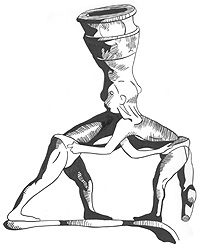The following matrix is inspired by Grossman’s aggression compass from his landmark book On Killing and is based on my own experience.
My primary disconnect in dealing with martial arts people when it comes to self defense is that fact that all martial arts self-defense assumes imminent contact. Most of these are further confrontational and not predatory.
All non-predatory aggression can be addressed in a non-contact manner, so there is no sense on focusing on resolving standup fights. The worst part of this fantasy complex breaks down into two elements:
1. Everything is a full blown, NFL or Hong Kong Theater or Hollywood attack, rather than the tentative probing that usually builds up to actual contact, a process whereby the predator determines your vulnerabilities and decides whether or not to strike.
2. Countermeasures to stopping the attack before it is launched are virtually unknown and assumed to be either un-necessary or ineffective.
The basic problem with this is the fact that we have all been taught that the human has only two aggression functions, fight or flight.
Fight is a word that means mutual combat, violence in kind, a physical argument, an athletic contest, a ritual combat, and has no place in self defense or survival thinking unless one is a prizefighter or duelist. This even goes in combat sports. For a boxing coach to tell a fighter that he cannot evade his opponent and frustrate him is to tell him he can’t box. What makes the boxing match is the artificial agreement on the part of the fighters to fight in close proximity in an enclosed area.
Flight is often an option but rarely a productive one, as attackers are usually younger, taller, whicker and more numerous.
Each person in any situation [excepting special restrictions, such as being stuffed in a trunk] has the following aggressive options all of which form the threads of the cords that come together as an intertwined rope of violence. Think of a three-person encounter as being a three-ply rope. The list will be giving according to proximity. Aggression is most purely defined as the imposition of will. Successfully avoiding an ambush is an imposition of will.
Will Imposition Matrix
1. Searching [he can do this with eyes only]
2. Avoiding
3. Stalking
4. Evading
5. Tracking
6. Losing
7. Chasing
8. Fleeing
9. Threatening
10. Posturing
11. Making contact
12. Denying contact
13. Maintaining contact
14. Breaking contact
15. Controlling contact
16. Denying contact control
17. Seeking domination [submission]
18. Resisting domination [submission]
19. Seeking incapacitation [inflicting damage]
20. Denying incapacitation [avoiding damage]
21. Finishing [focusing damage]
22. Staying alive [sustaining/ recovering from damage]
Notes
The first 12 aspects of street survival are non-contact!
Keep in mind that each one of these options may be chosen—proximity permitting, by either antagonist at any time. It doesn’t necessarily follow that 3 can only go to 1 and 5 and that 4 can only option 2 and 6.
At any time an aggressor may decide he no longer wishes to be an aggressor and a target may decide he is going to become the aggressor.
Thriving in Bad Places











